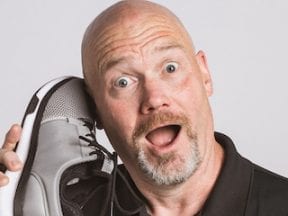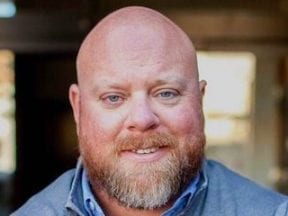In 2013 Jack Haldrup was reading “The Lean Startup” and pondering how to launch a business. He was seeking a niche based on personal experience versus market research.
“I had tried cold process soap, purchased at a farmer’s market,” he told me. “I really enjoyed it. I’ve always had sensitive skin and have been interested in those types of products. After using that soap, I thought there must be other guys like me who would enjoy it, too. So I decided to try to find those customers.”
Fast forward to 2021, and Dr. Squatch, Haldrup’s company, sells its own natural soaps and other grooming products for men. Revenue in 2020 was roughly $100 million, having exploded from $5 million just 18 months earlier.
How does a company grow from $5 million to $100 million in 18 months? I asked him that question and many more in our recent conversation. The entire audio version of our discussion is below, followed by a transcript, which is edited for clarity and length.
Eric Bandholz: Tell us about Dr. Squatch.
Jack Haldrup: We’re a men’s personal care brand. We focus on natural products for guys. Soap is our hero product. It’s what we started with, and it’s our biggest category. We’ve recently launched a deodorant that’s off to a good start. We try to create a product that is natural and formulated for men.
Bandholz: Folks might think that Dr. Squatch is a direct competitor to Beardbrand. But we’re side-by-side trying to take a chunk out of Procter & Gamble and all those mega-corporations.
Haldrup: Totally. There’s a lot to take there. The men’s grooming market is not as fragmented as other categories, including female-oriented products.
Bandholz: Take us back to the early days of Dr. Squatch. You’re essentially selling one of the most commoditized products.
Haldrup: I started the company in 2013. I’d been thinking about it for maybe six months before that. At the time I was reading “The Lean Startup.” I was looking to start in a niche related to my own personal experience. I certainly didn’t do market research and conclude that soap is a great category.
I had tried cold process soap, purchased at a farmer’s market. I really enjoyed it. I’ve always had sensitive skin and have been interested in those types of products. After using that soap, I thought there must be other guys like me who would enjoy it, too. So I decided to try to find those customers.
Bandholz: Was it purely online initially?
Haldrup: I was doing online, yes. But my business partner and I made a lot of door-to-door sales at local boutiques. That was a huge part of our business for the first year or two. It wasn’t sophisticated. We didn’t go to many trade shows.
We drove to Portland, Seattle, and down to California and solicited smaller shops to resell our soap. It was not the most efficient way to scale a business.
My partner was more of a sales guy than me. I was pursuing the online approach. He gave us a foundation to invest in ecommerce. But knocking on doors was definitely a learning process. A lot of people took a chance on us because we were there.
Bandholz: It sounds like he’s no longer your partner.
Haldrup: That’s right. He’s a good friend and has been for most of my life. But we had a different vision for the company. I started the company and then brought him on eight months into it. That lasted for two or three years. He was essential during that time, helping us scale. But he didn’t want to tackle the next phase of the journey in terms of growth.
Bandholz: What was that phase? Outside investors?
Haldrup: Yes, outside investors. We were entirely bootstrapped for the first five or six years. I didn’t want to continue down that path. I wanted to really scale it, or make it passive or find a new project to work on. I didn’t want to keep it small.
I bought out my partner a year and a half before we took outside money. I was essentially the sole owner then.
Bandholz: So you raised money and found the magic button to scale the business.
Haldrup: That’s right. There’s a lot to unpack here. First and foremost, I changed my vision for the company. I started thinking bigger. I evolved to be open to meeting investors and raising money. I met a handful of people and ultimately chose an investor that I felt would add a lot of value. The company is based in Los Angeles. They invest in consumer businesses. Their portfolio companies are a tight-knit group, almost like an advisory community.
It’s gone incredibly well for us. We had maybe five people on the team and roughly $5 million in sales at the time. And fast forward to today, a year and a half later, we’ve got 150 people on the team. We’ve built a manufacturing facility, and we’ll do over $100 million in sales in 2020. Paid media and video has been a huge driver of that. I have no regrets.
Bandholz: Going from $5 million in revenue to $100 million in 18 months is unreal. We’ve all seen your YouTube video with that bearded spokesman. Was that your best marketing channel?
Haldrup: We’ve used YouTube and Facebook, but that video put us on the map. We made the first video with that actor in 2018. I was in San Diego at the time. We were working with a marketing agency there, but we wanted something bigger and more impactful. So we decided to create a viral video.
The agency found him at a comedy show for San Diego’s funniest comedian. They approached him, and he agreed to do it. We had no idea what we were doing — just creating an experience with video.
That was before our outside investment. We were about a $3 million company then. We spent about $18,000 on the video. It was a massive expense at the time. It was scary, actually.
Bandholz: So you put your faith in it and cranked it up from there.
Haldrup: Yes. We use a simple post-purchase survey to know where people first heard about us. We see a lot of attribution from YouTube that doesn’t come through on its metrics.
Bandholz: We use a wonderful post-purchase app called Grapevine for $3 a month that allows us to ask that one question of how people find us.
Haldrup: For sure. Grapevine is incredible. I recommend it to everybody. I was blown away at how simple and impactful it is.
Bandholz: You guys are heavy on subscriptions. Is that a big part of your business?
Haldrup: It’s definitely a big part of our business, about 30 percent of overall revenue. Every business that sells a consumable product should offer subscription enabled ecommerce. There’s no downside.
Certainly we have customers canceling. They have too many soaps, or they don’t like the product. But it is still is a valuable part of our business.
Bandholz: You’re running Shopify and ReCharge, but you have a custom flow for people with the subscriptions.
Haldrup: Yes.
Bandholz: What percentage of revenue comes from your website versus Amazon?
Haldrup: We get about 85 percent of our revenue from our site and the rest from Amazon. We have boutique retailers that sell a bit here and there. We’re hoping to expand into larger brick-and-mortar retailers over the next couple of years.
Shopify is a great platform. We moved from Cratejoy in February of 2020. We saw dramatic improvements in terms of on-site performance, as well as on the backend, dealing with the data. We’ve experienced no massive challenges with Shopify thus far. We have no plans to change.
Bandholz: Are you still working with the marketing agency? What is the agency’s role?
Haldrup: Yes, we’re still a client. We do all of our own paid media buying and paid media optimization. We have an internal team focused on that. For content, it’s a mix of internal and external. The agency brings a lot of creative stuff to life. They also have the expertise in terms of shooting and editing the video.
It a retainer-based relationship, plus an added amount for the video work.
Bandholz: Where can people follow your company and purchase products?
Haldrup: The Dr. Squatch Instagram presence is pretty entertaining, as is our YouTube channel. Our website is DrSquatch.com.





